As I walked through the garden this afternoon, the brisk cool air biting my cheeks, I thought of all that I see here, nearly every day of the year. There is so much beauty all around us—so much that can ground us and muffle the squeal of the outside world (or sometimes even the inside world)—if we take the time to really see.
One of the most valuable lessons I have learned from Elizabeth Lawrence is to not just look, but to really see the garden. So, I wanted to share the beauty that caught my eye today. Nearly all of these shots are close-ups, which is purposeful. I find peace in the simplicity of composition… and in the things that we may otherwise pass right by without noticing. I hope you do, too.
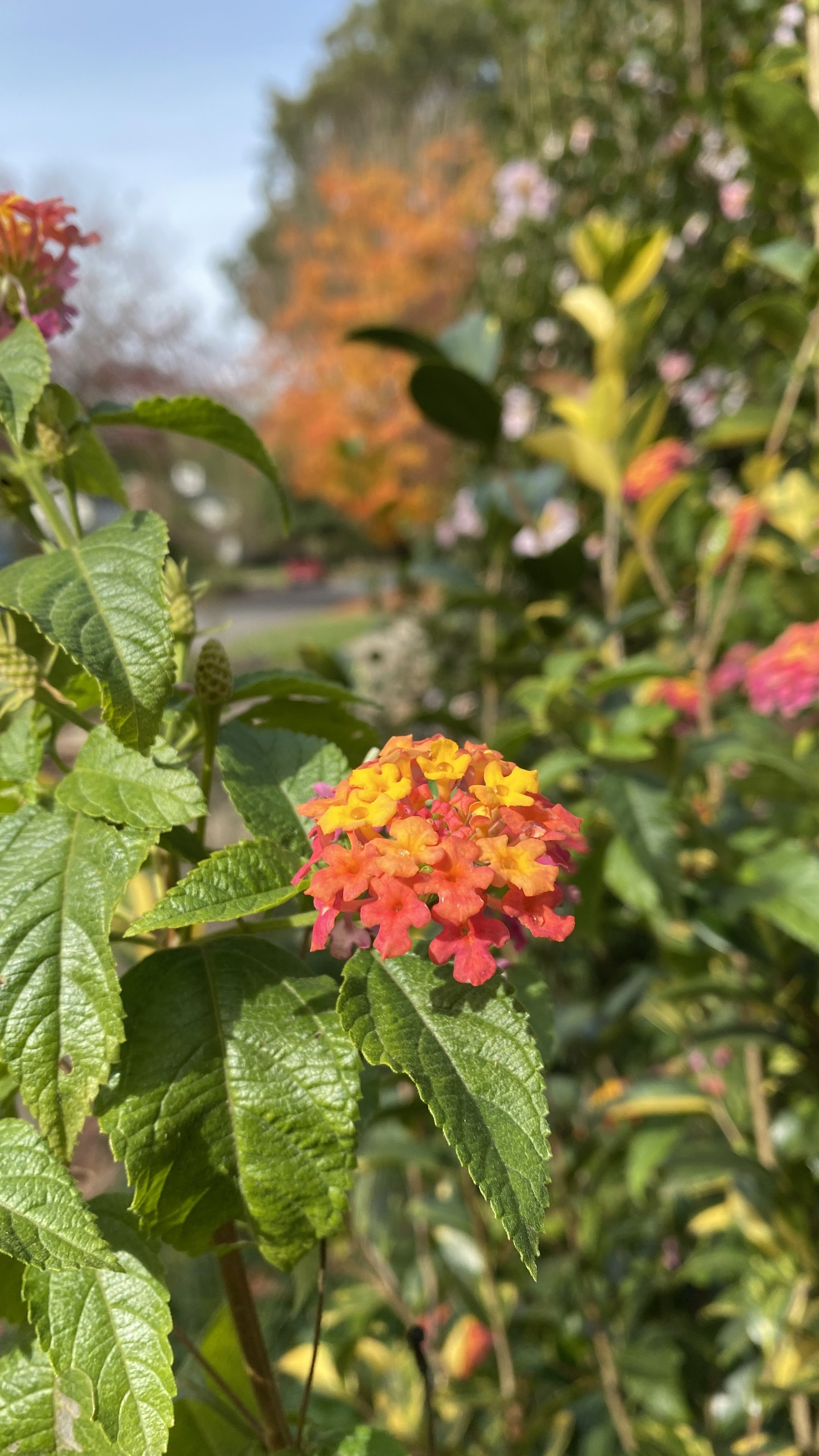
The flowers of Lantana camara ‘Li’l Miss’ echo the glowing foliage of the sugar maple down the street.
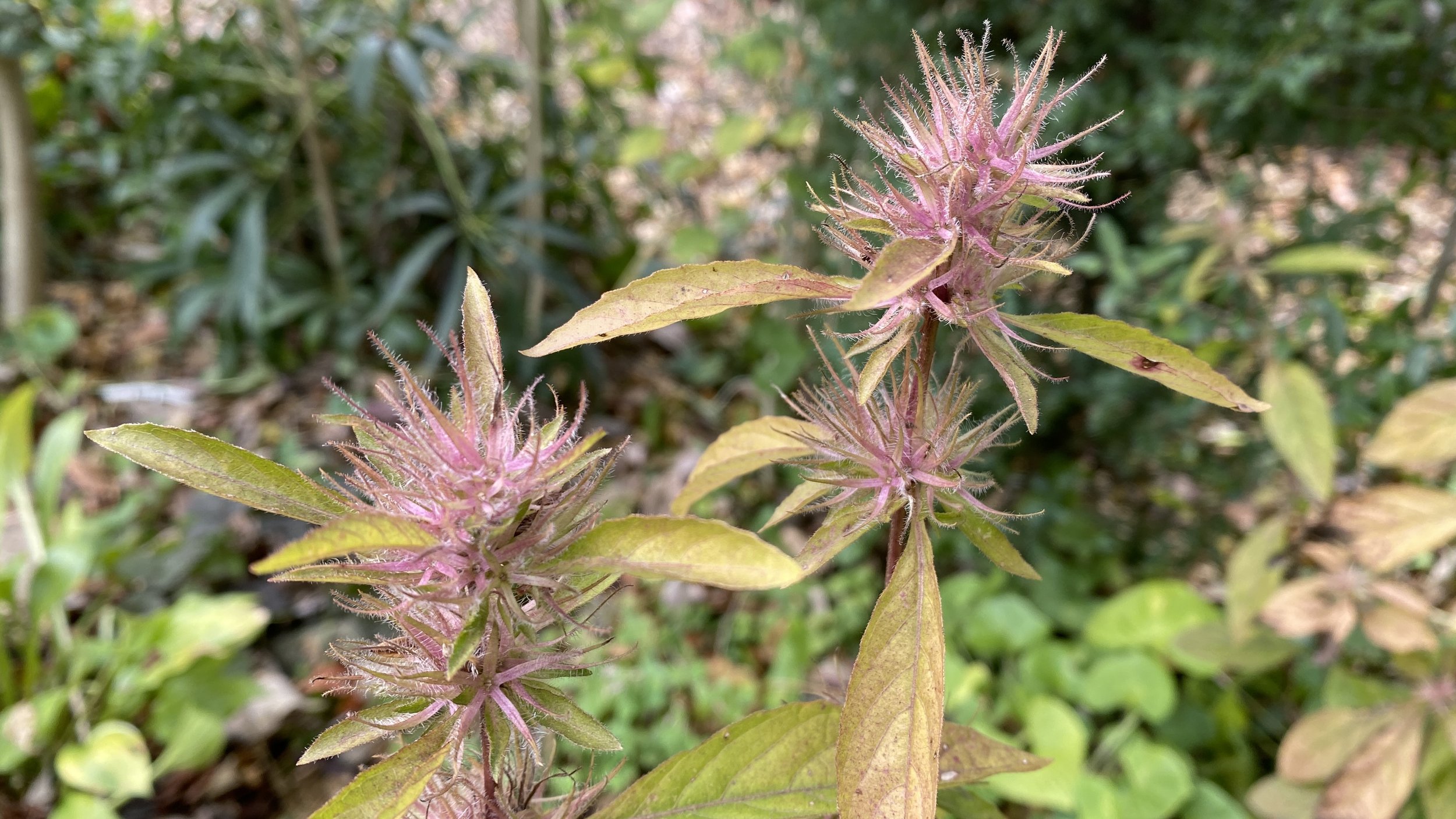
I have never before noticed the warm pink cast and fuzziness of seed heads of Ruellia caroliniensis (Carolina wild petunia).
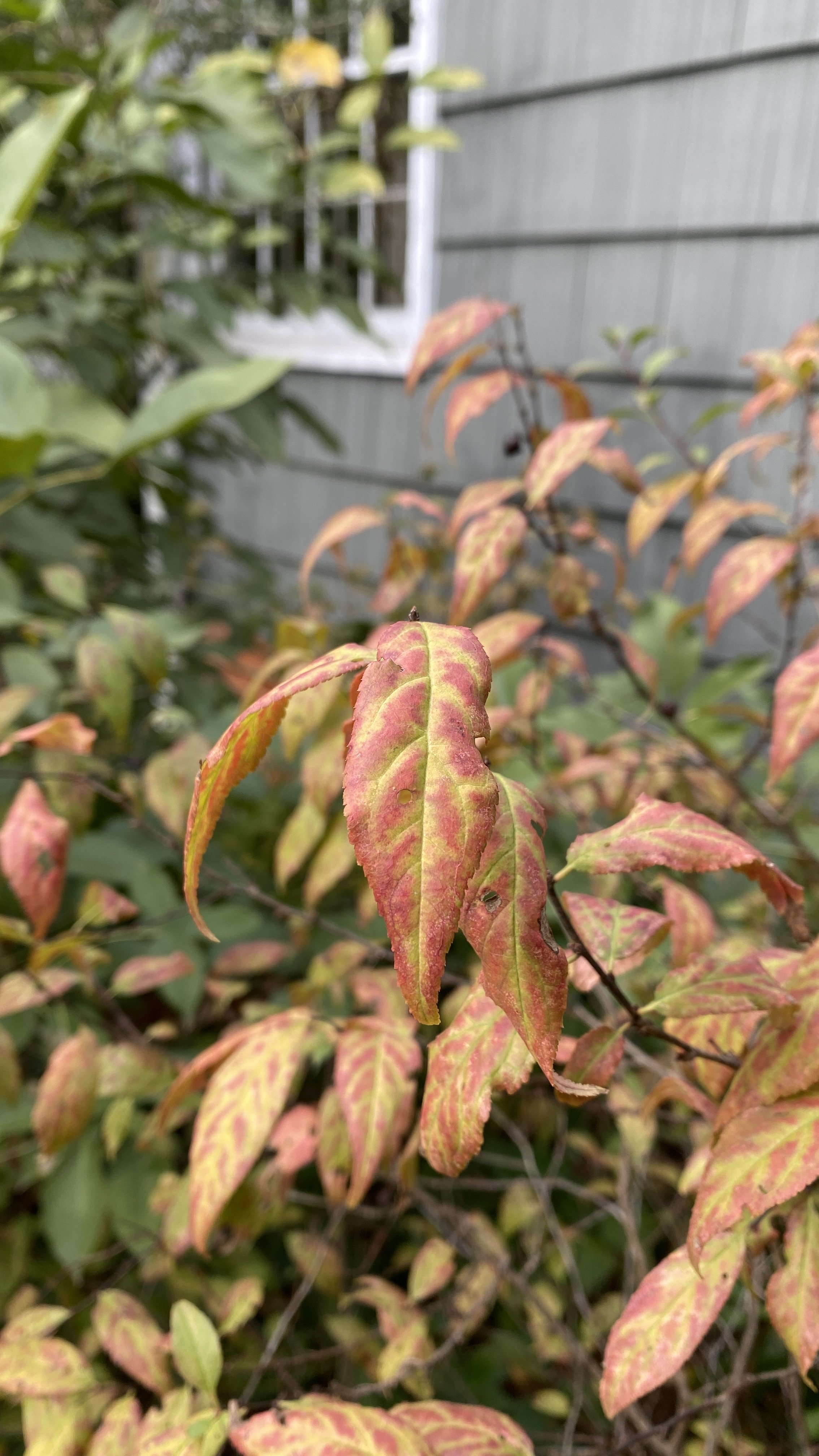
The coloration of the leaves of the Prunus humilis (dwarf bush cherry) is striking. This was given to Elizabeth in October of 1957 by Caroline Dormon.

I see you! A few flowers of Viola sororia (common violet) are popping out here and there, but hide mostly under the leaves at this time of the year.
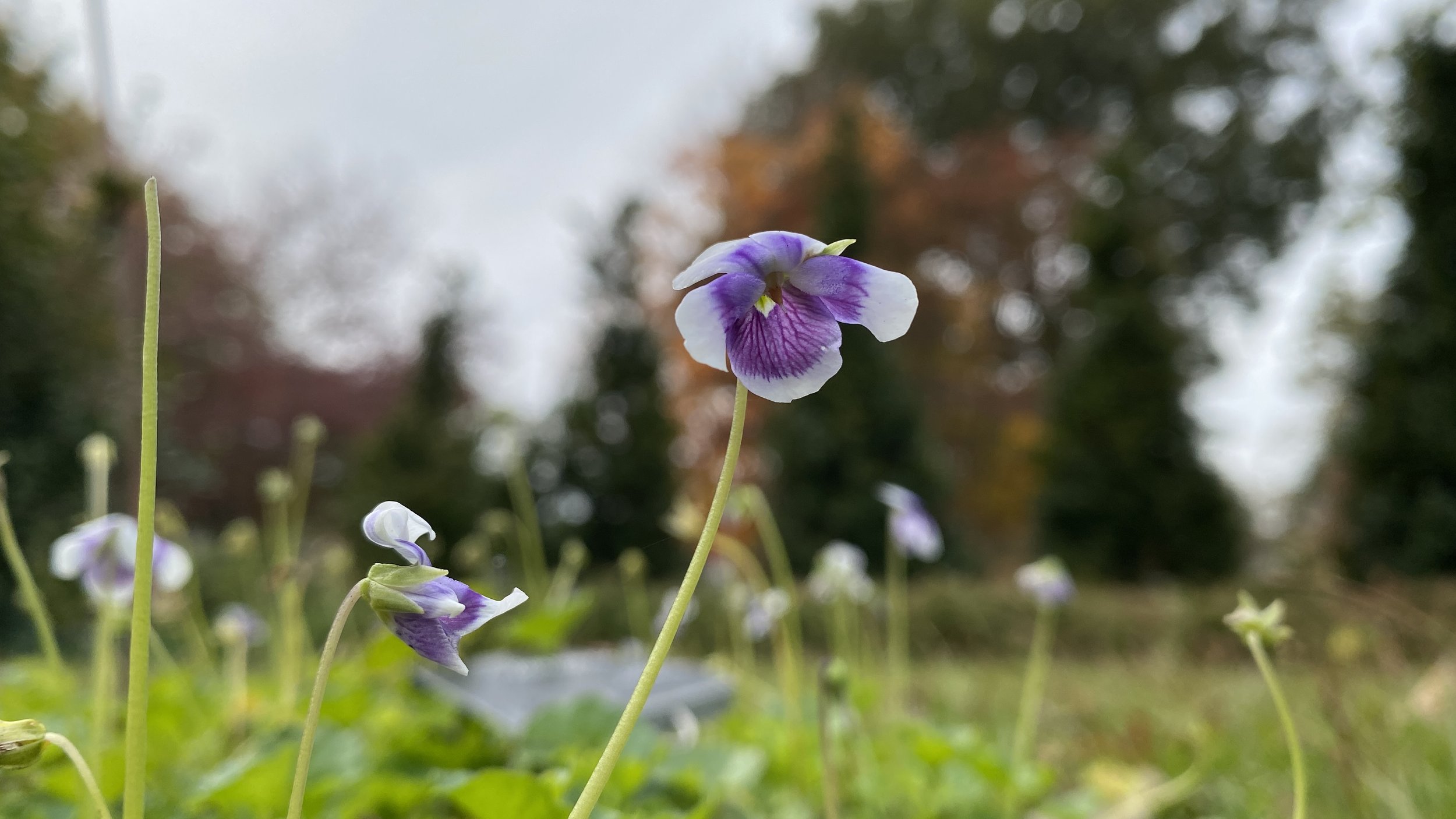
Speaking of violets… The tiny flowers of Viola hederacea (running violet) are so strange and wonderful.
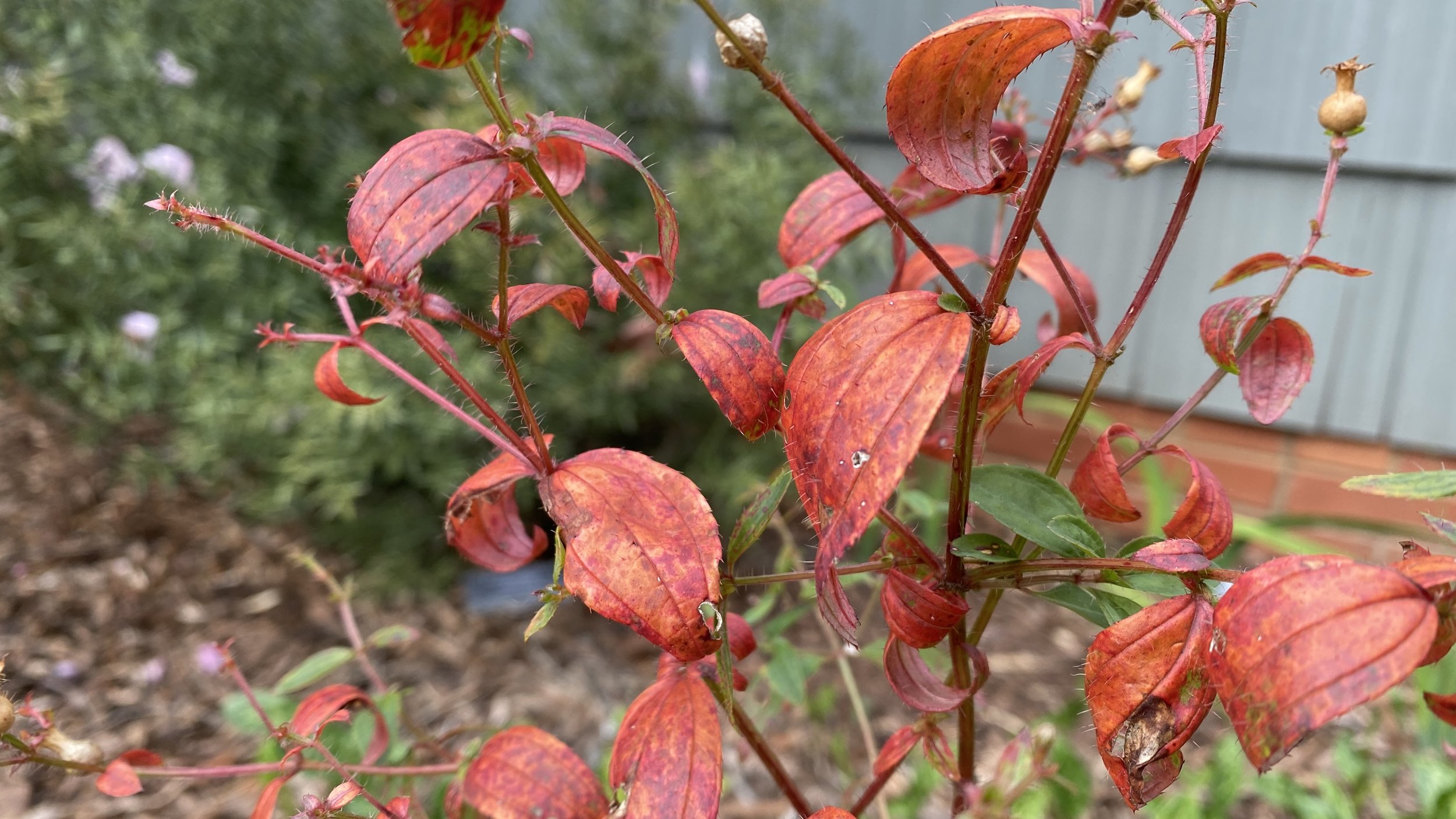
Rhexia virginica (meadow beauty) is ablaze this year—stems and all!

Even evergreen plants can have fall color, as witnessed in this brilliantly warm leaf of Jasminum asiaticum (Asiatic jasmine).
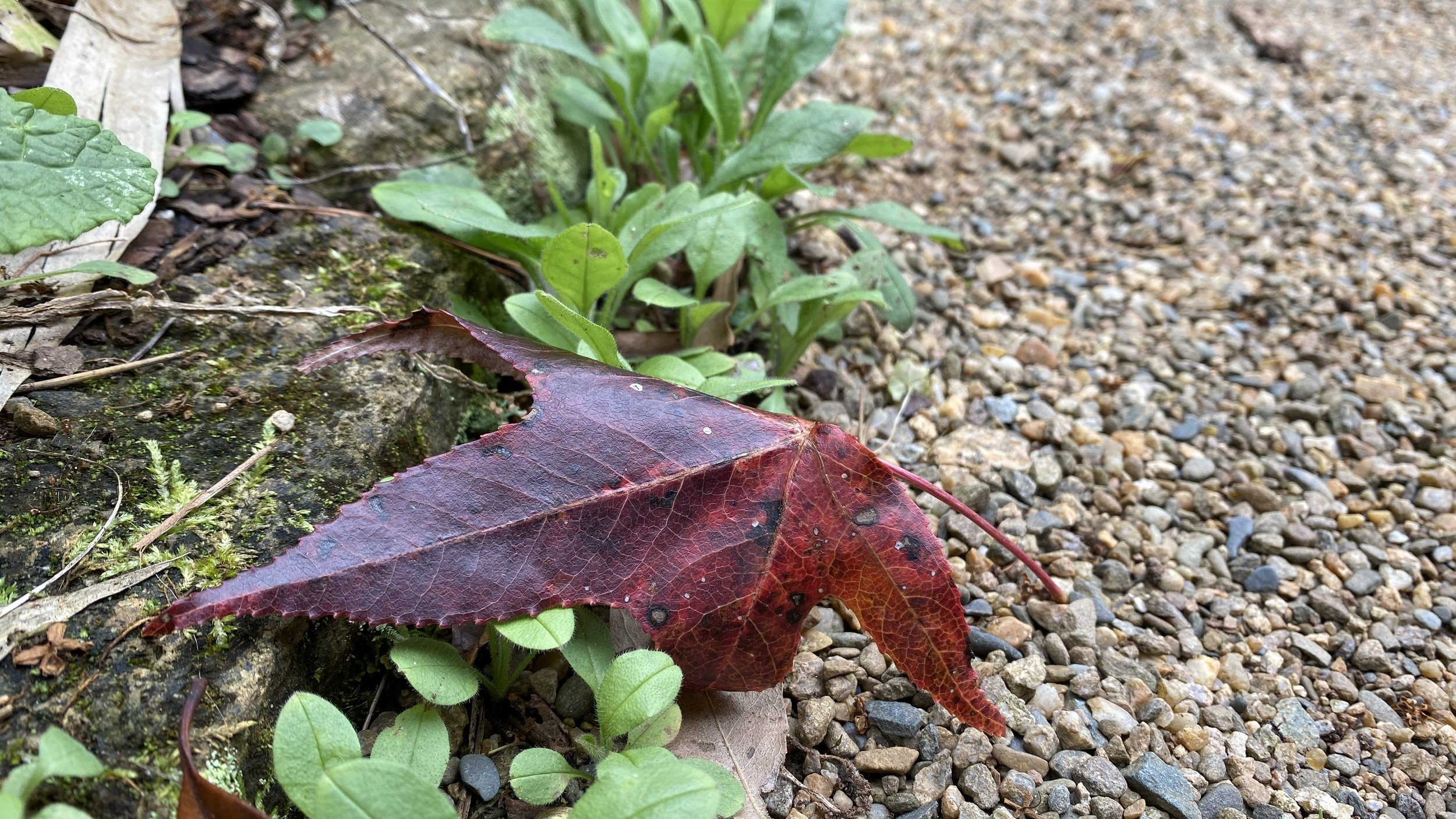
A fallen leaf from the neighbor’s Liquidambar styraciflua (American sweetgum) provides dramatic contrast to seedlings of Myosotis sylvatica (forget-me-not).
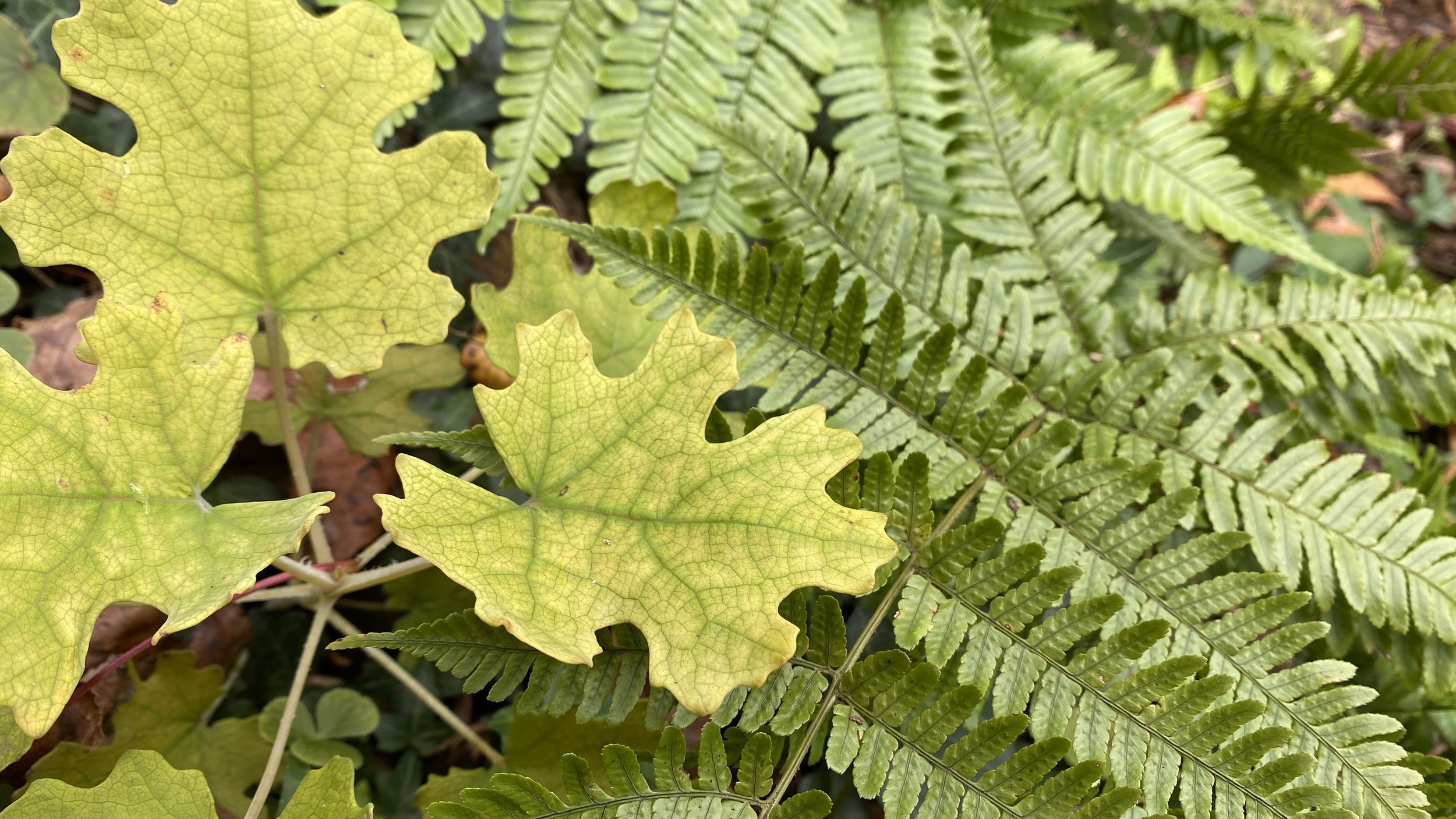
A lovely textural pair… Macleaya cordata (plume poppy) and Dryopteris erythrosora (autumn fern).
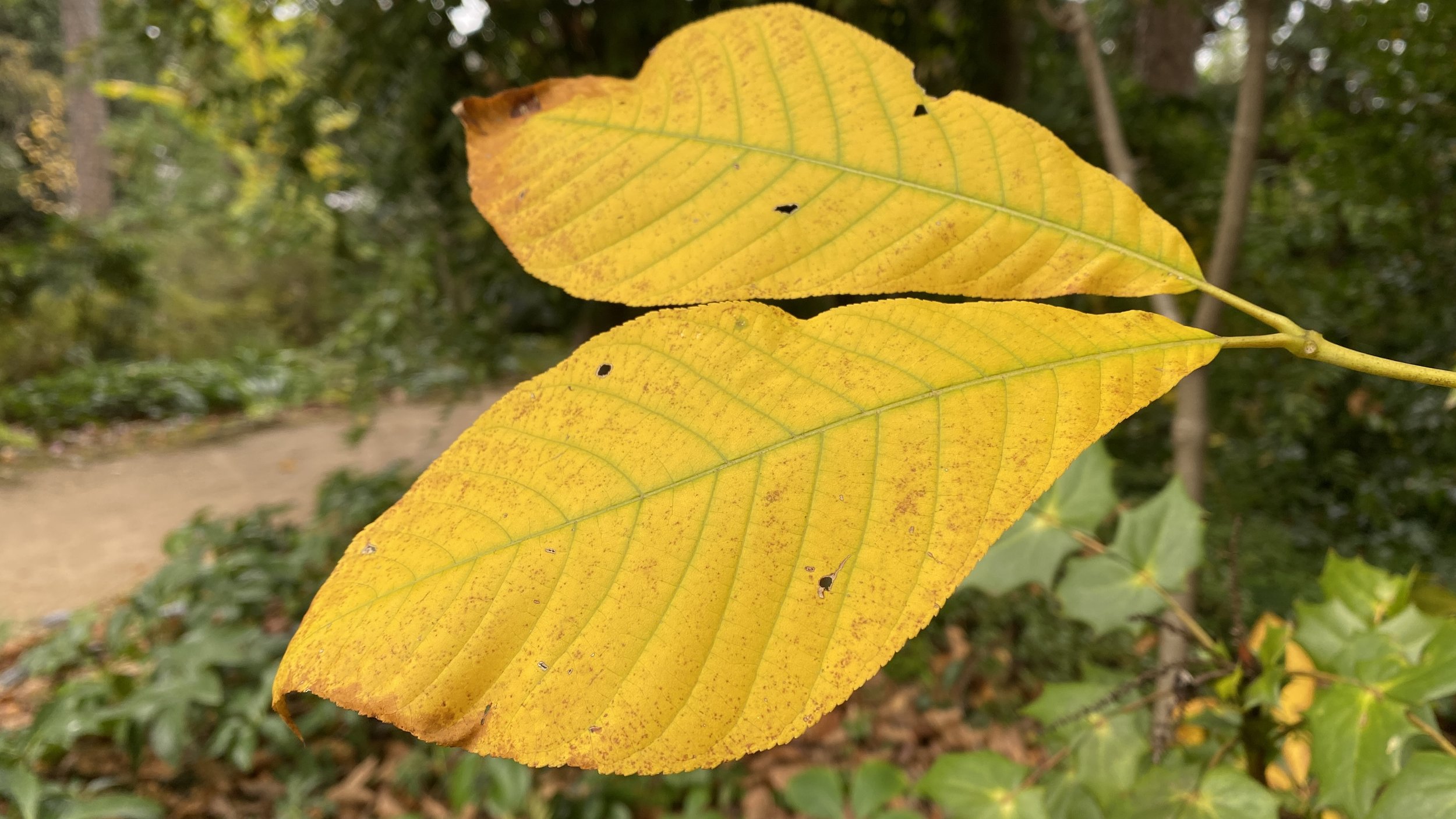
This is the second reason (or maybe the first?) to grow Aesculus parviflora (bottlebrush buckeye). Three of the five leaflets have already dropped.

At the base of a large pine tree in the back of the garden, I found this little vignette: Cyclamen hederifolium Silver Leaf Group (hardy cyclamen) with two different fern sporelings and moss. Who needs flowers?
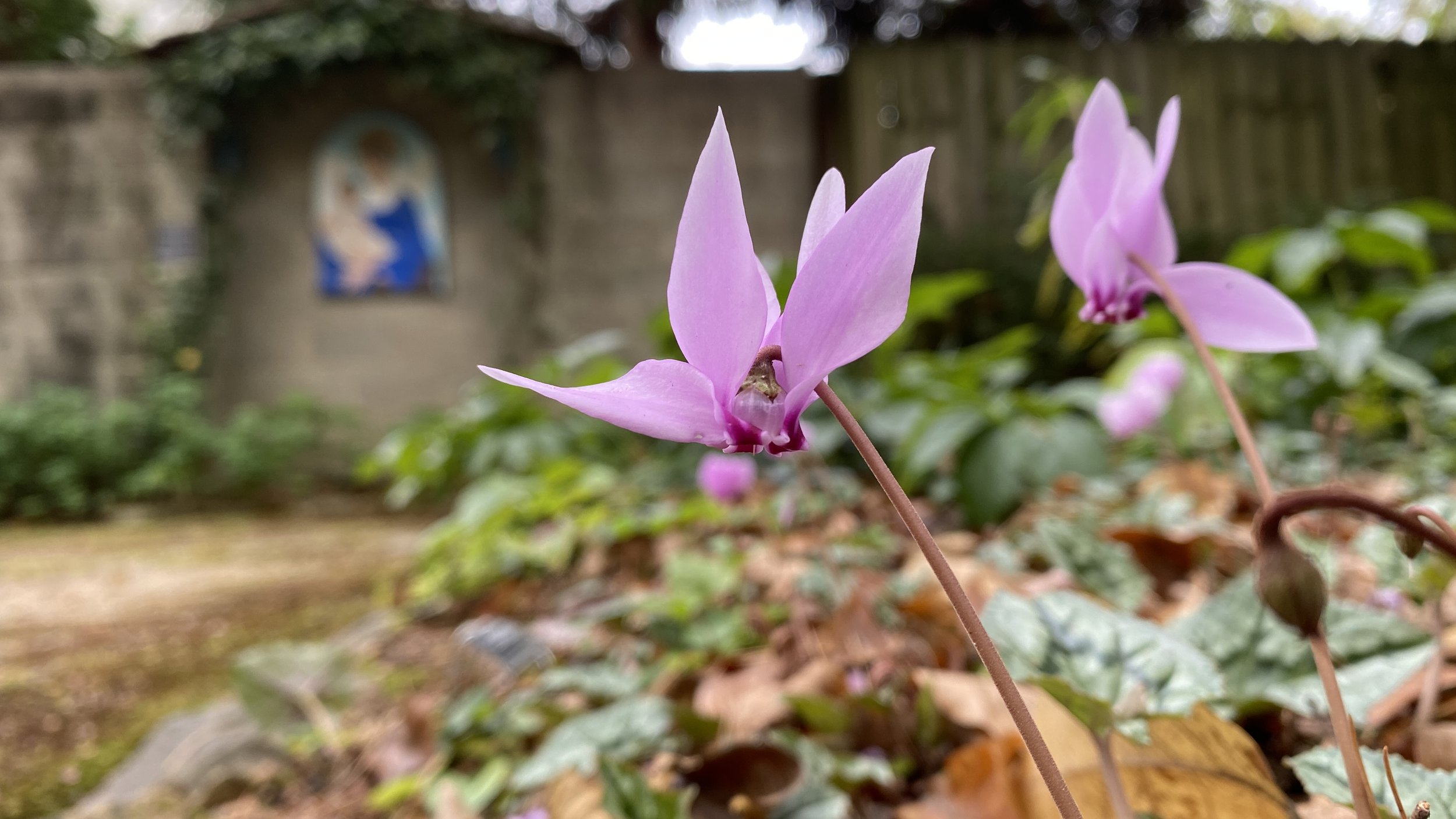
To that end, with flowers like those of this (one of Elizabeth’s original) Cyclamen hederifolium (hardy cyclamen)… who needs leaves?
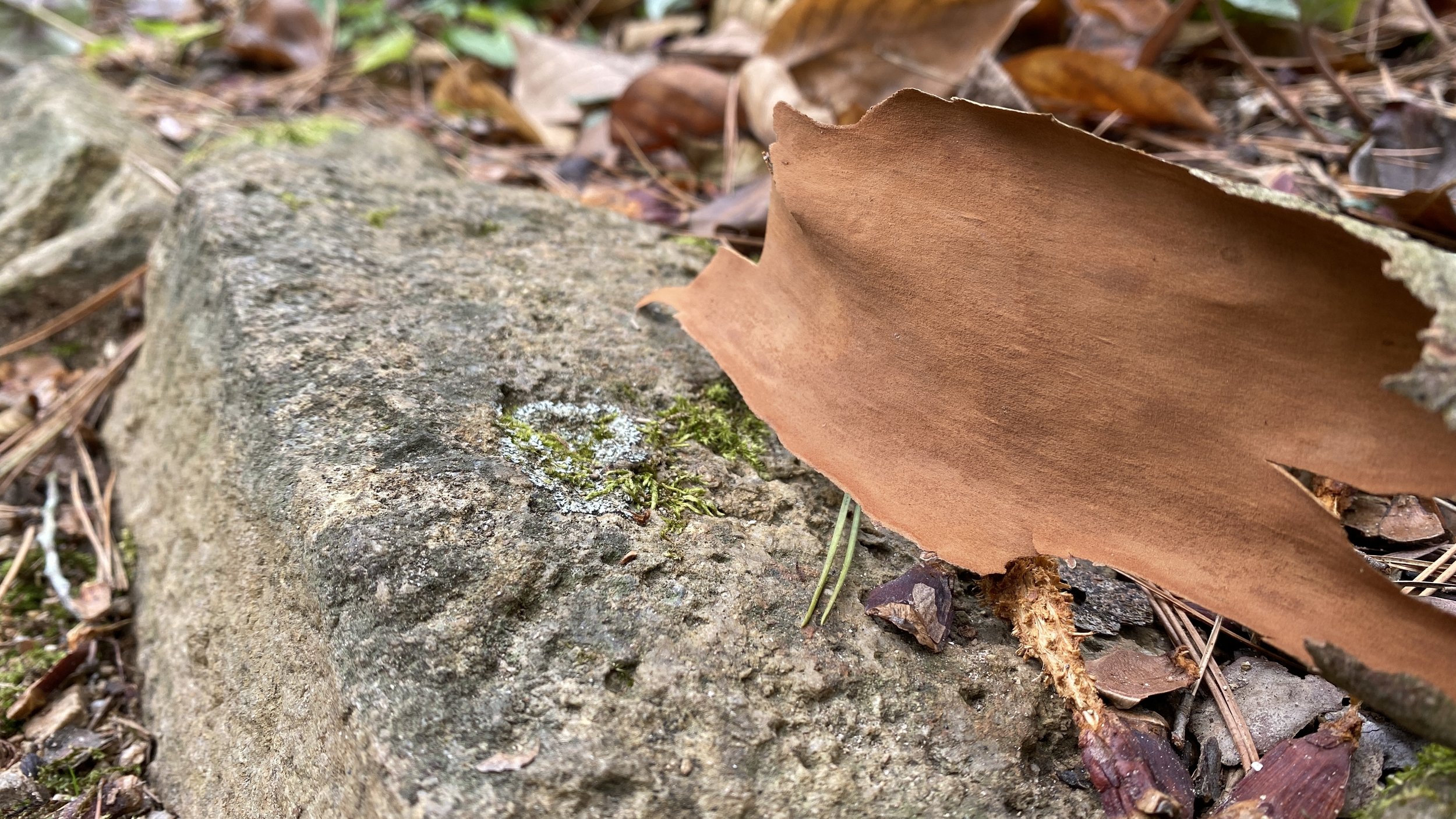
A piece of the exfoliating bark of Elizabeth’s original Stewartia pseudocamellia var. koreana (Japanese or Korean stewartia) came to rest on a rock—delicately decorated with lichen—at the edge of the path.
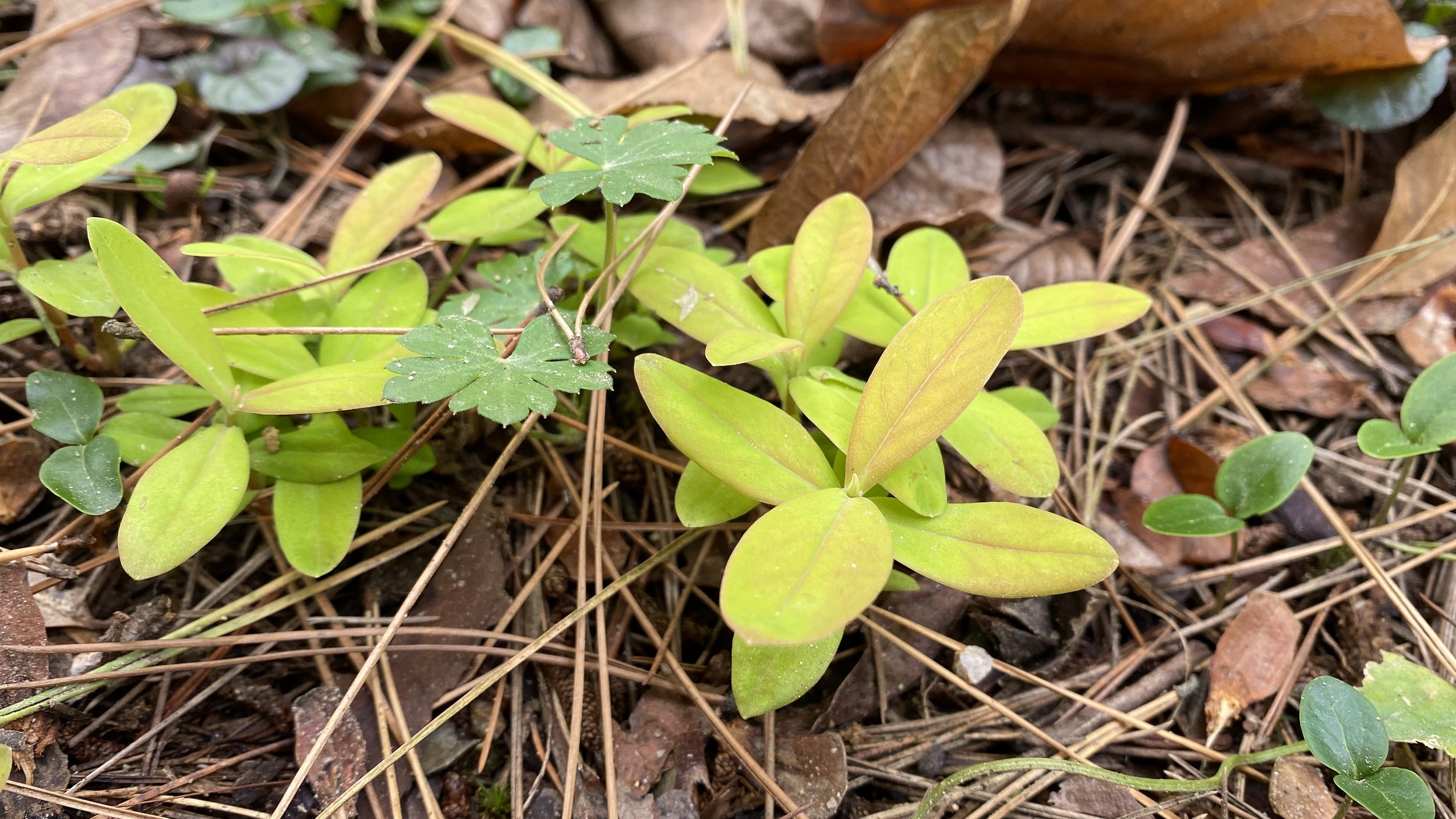
Cooler temperatures have brought about an ironically warm flush on the bright new growth of Hypericum calycinum ‘Brigadoon’ (St. John’s wort).
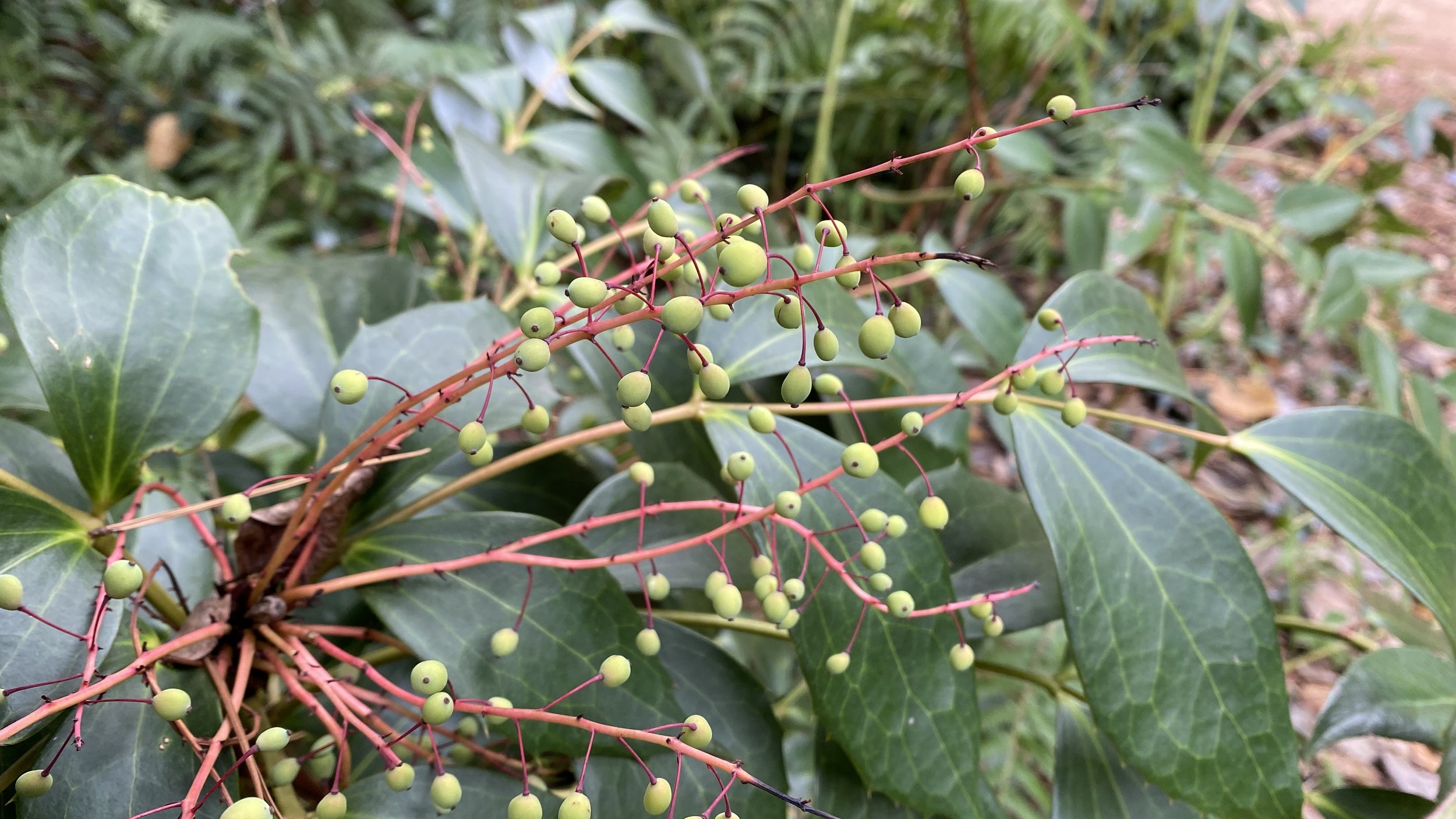
The delicate fruits of Mahonia gracilipes (lazy mahonia) will soon turn dusky blue. I like this phase of color, with the thin, delicate, warm coral stems, especially against the deep green of the coarse foliage.
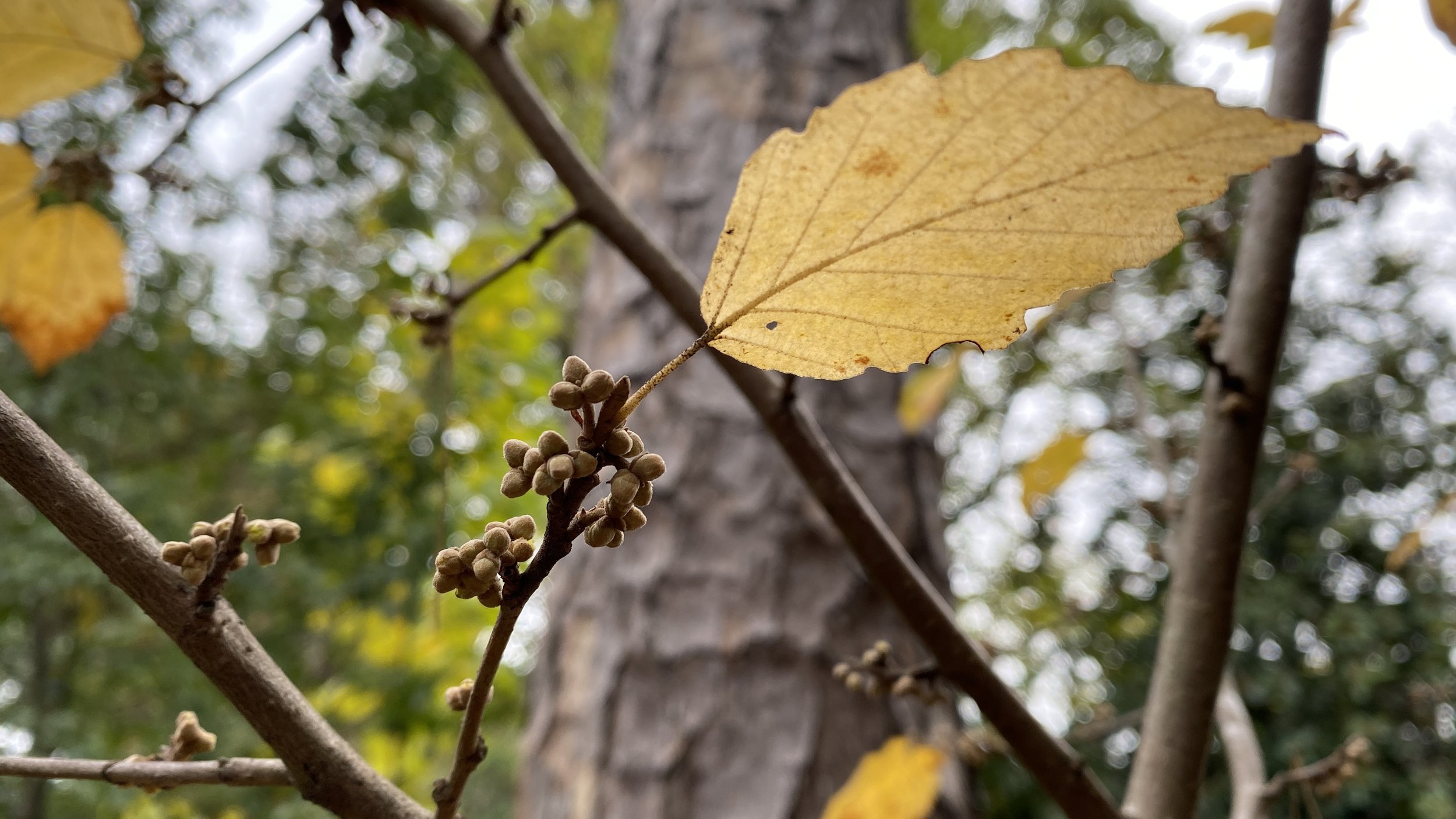
Elizabeth’s original Hamamelis virginiana (our native witch hazel) will soon share the fresh, clean scent of its small, yellow spidery flowers.
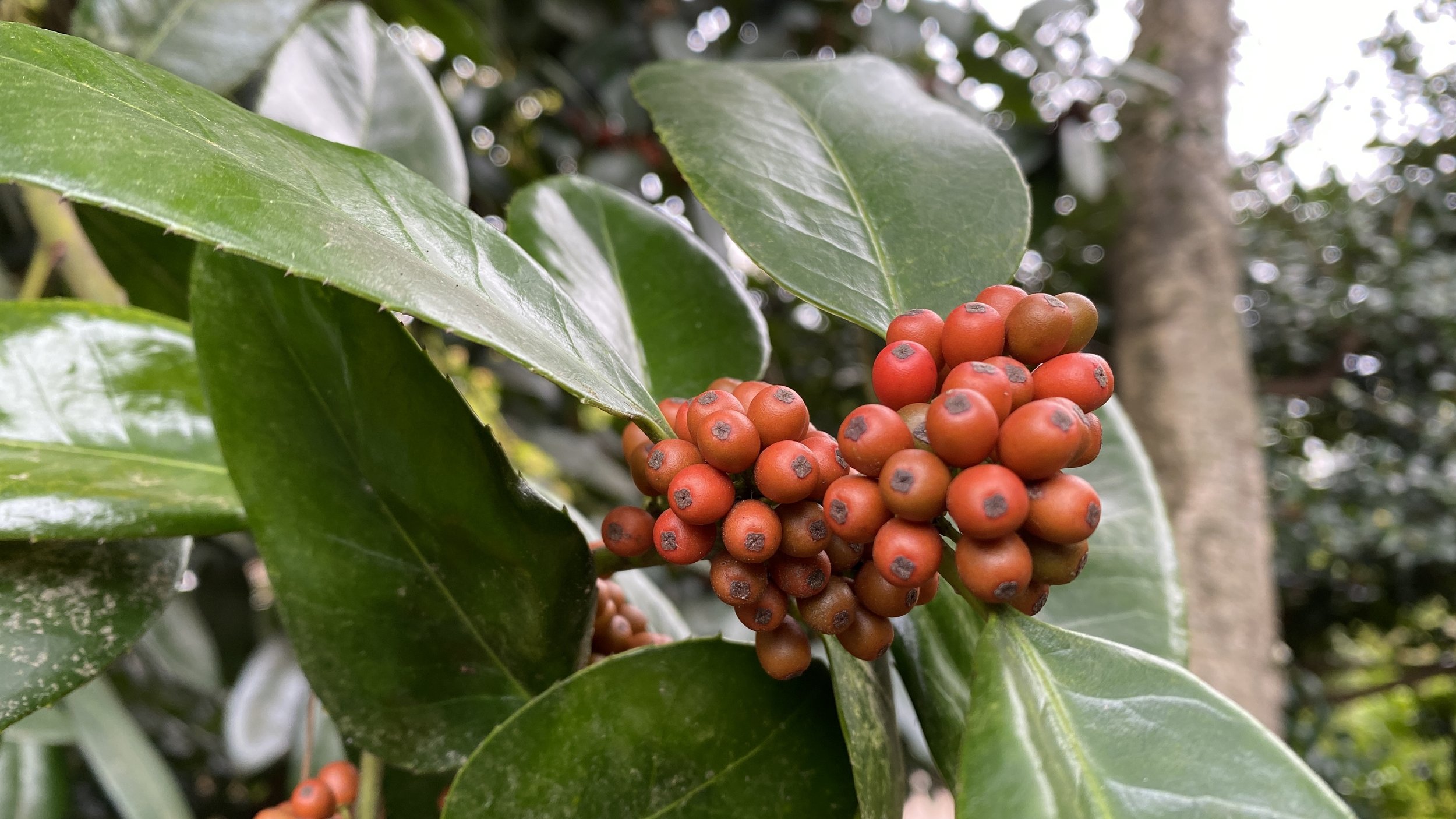
Highly decorative berry clusters of Elizabeth’s Ilex latifolia var. foemina (lusterleaf or magnolia leaf holly) are beginning to color. These are among the last to be eaten by the birds, and provide a good source of food in the late winter. Plus, it’s a very handsome tree in the garden.
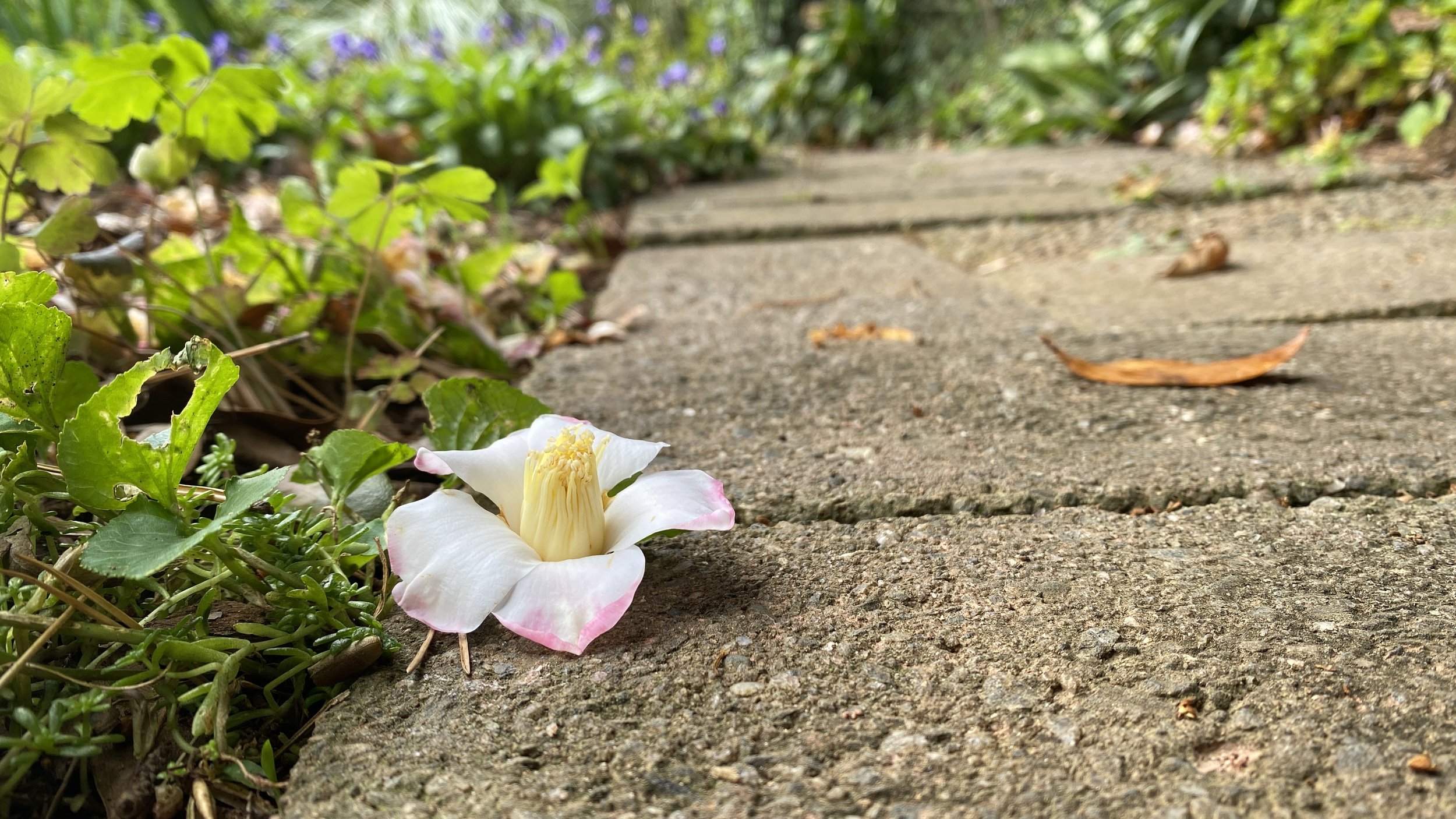
I love the way the blooms drop from Elizabeth’s Camellia saluenensis (Saluen’s camellia)—in their entirety instead of shattering like those of Camellia sasanqua (fall-blooming camellia). Fallen blooms can stay fresh-looking for a few days.
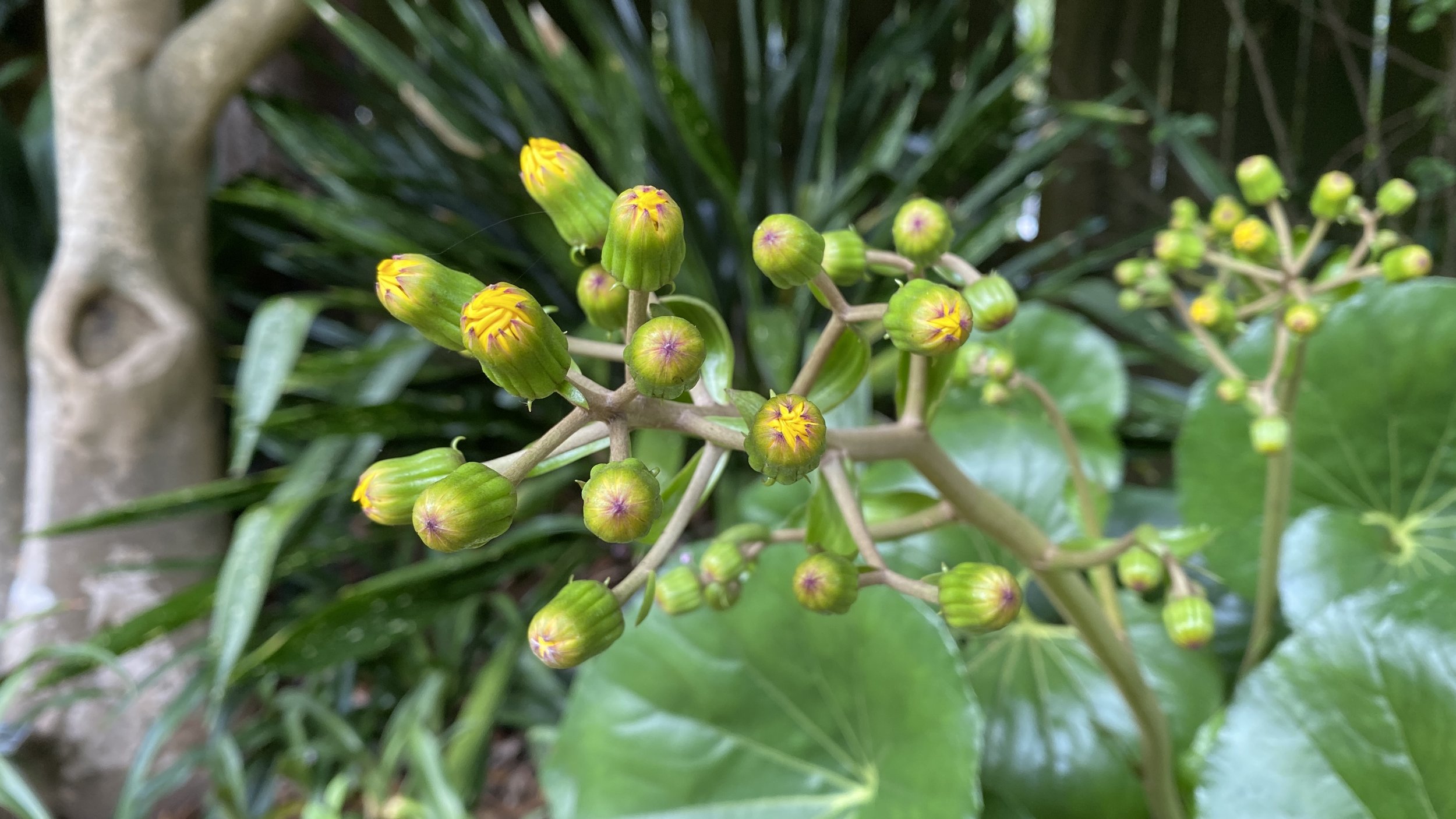
Finally! Flowers of Ligularia tussilaginea ‘Gigantea’ (giant leopard plant) take their sweet time to develop, much less open. These usually escape even a moderate frost, as the plant is protected by the dense evergreen canopy of Camellia saluenensis (Saluen’s camellia).
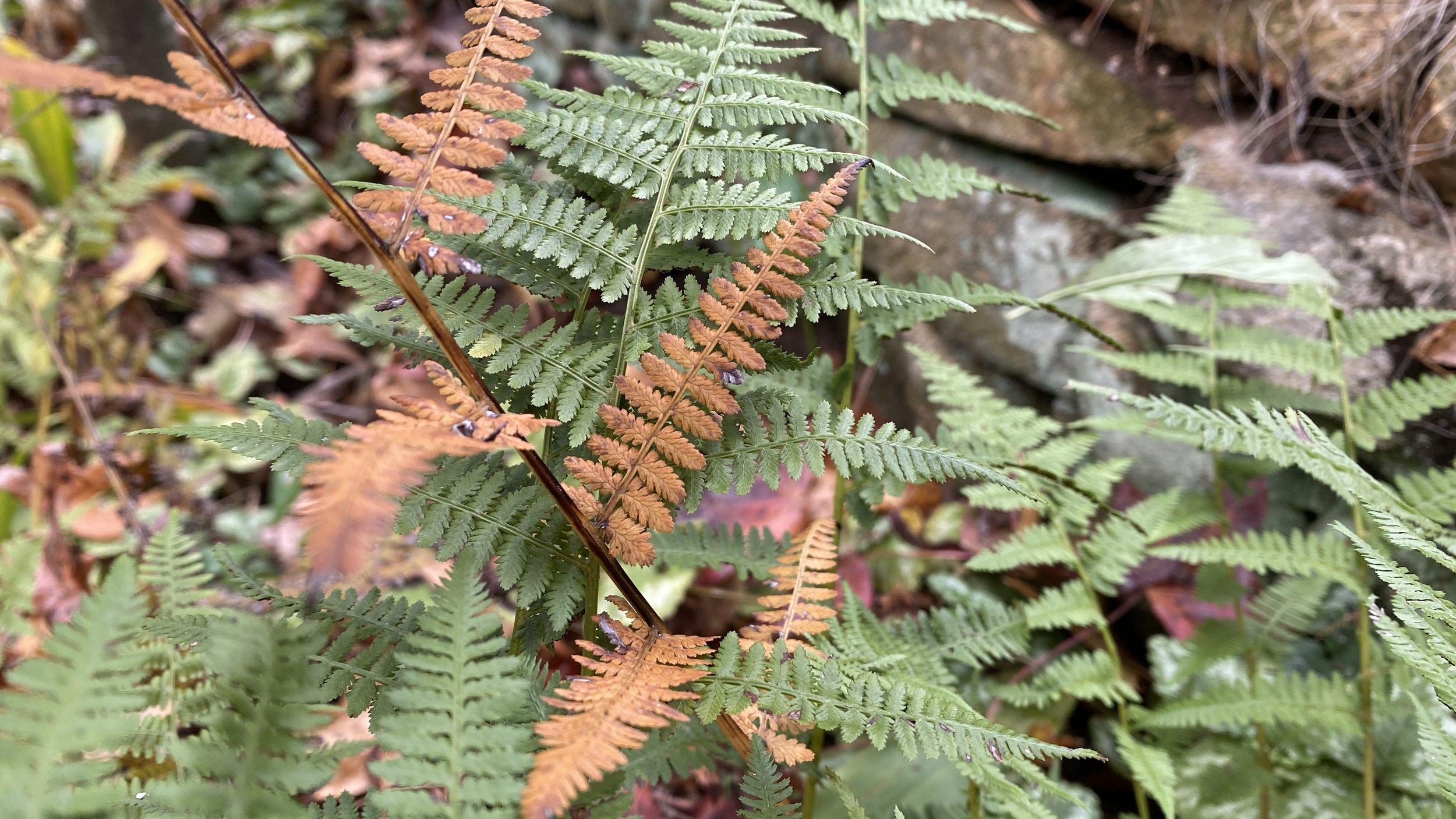
Ferns also get in on the fall color action. It is interesting to me to see just one frond of Elizabeth’s Athyrium filix-femina (lady fern) with autumn hue against the rest of the fronds, which, by this point in the year, look rather bedraggled but are still green…-ish.
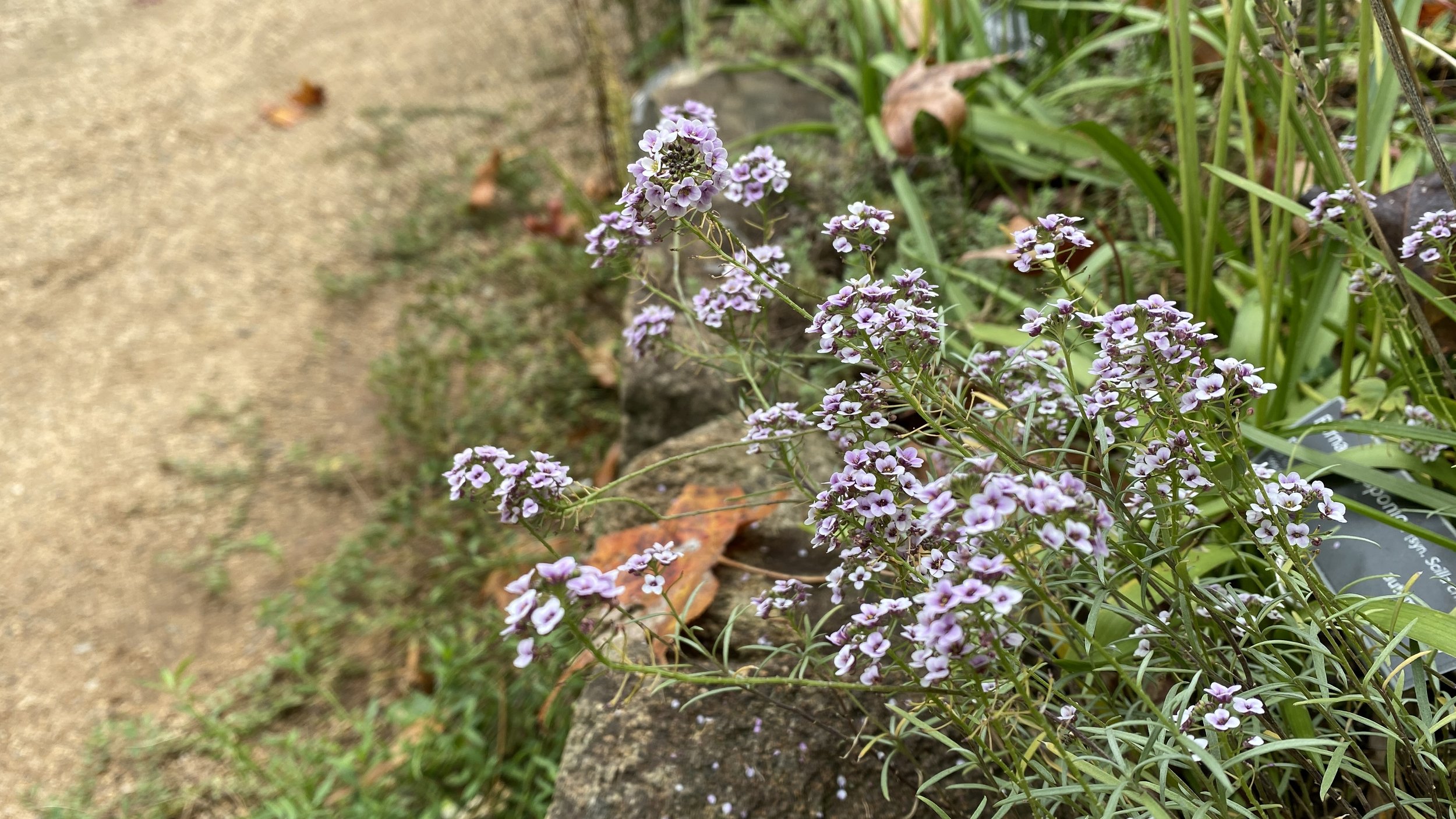
I now realize I should have planted way more Lobularia maritima Blushing Princess (sweet alyssum) throughout the garden. Plants set out in the spring have bloomed non-stop, and should continue until a hard freeze puts an end to them.
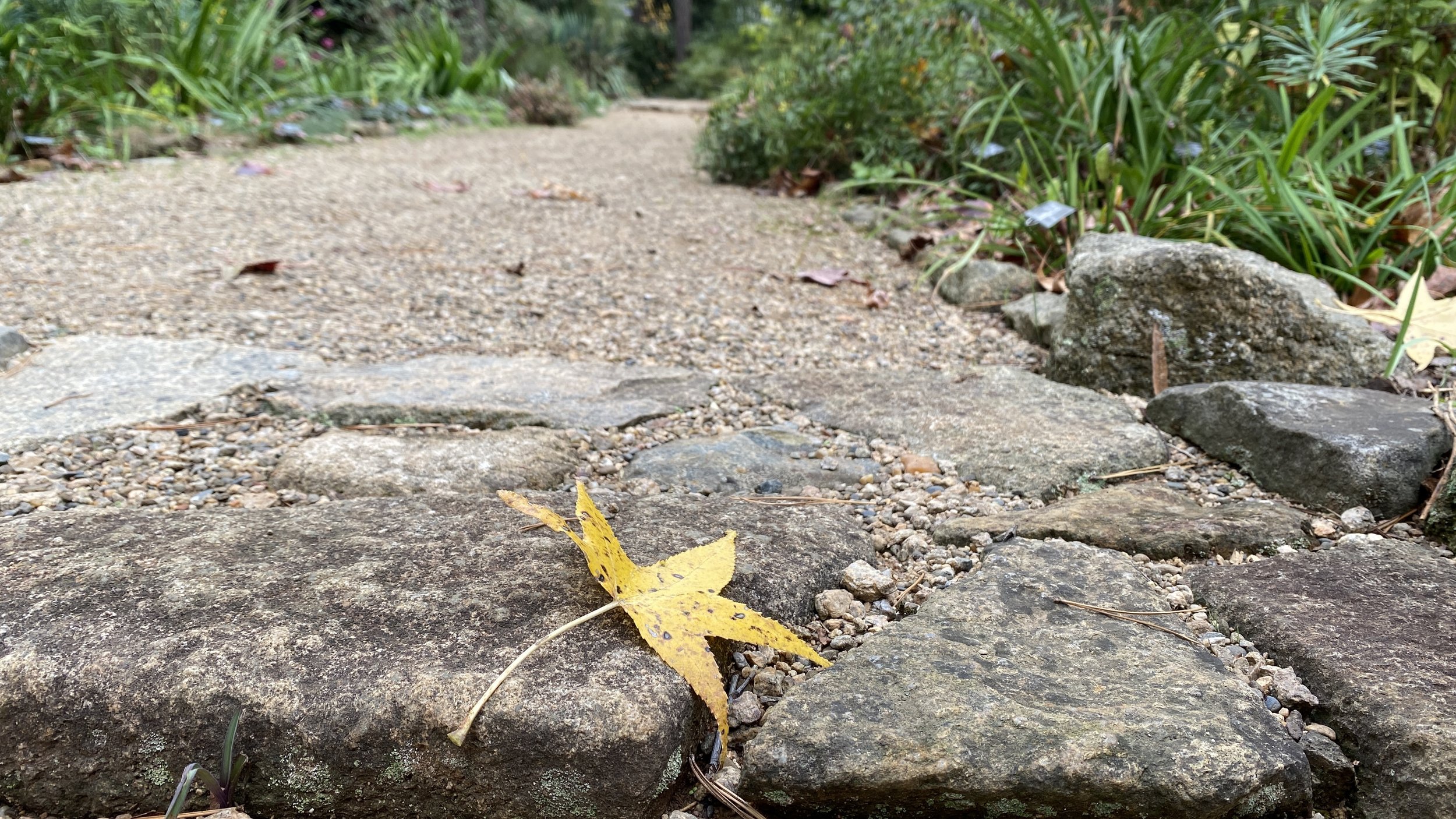
A fallen leaf from the neighbor’s Liquidambar styraciflua (American sweetgum) on the landing to the lower path reminds me of a leaf on a stream.
Enjoy your gardens. And remember to take some time to really see all the beauty around you every day.
Yours in Dirt,
Andrea
